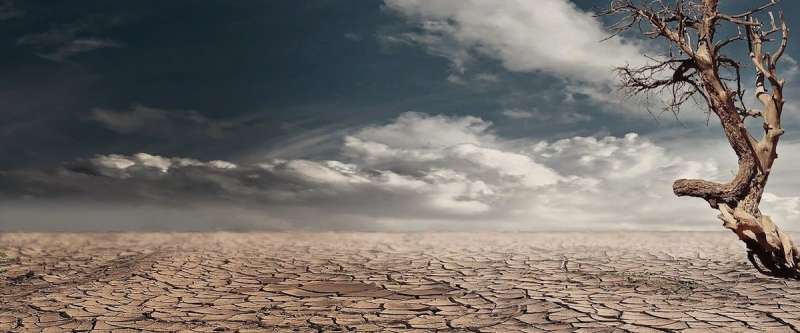When lipids meet hormones—plants' answer to complex stresses

Unlike animals, plants can't run away when things get bad. That can be the weather changing or a caterpillar starting to slowly munch on a leaf. Instead, they change themselves inside, using a complex system of expand iconhormones, to adapt to challenges.
Now, MSU-DOE Plant Research Laboratory scientists are connecting two plant defense systems to how these plants do expand iconphotosynthesis. The study, conducted in the labs of Christoph Benning and Gregg Howe, is in the journal The Plant Cell.
At the heart of this connection is the expand iconchloroplast, the engine of photosynthesis. It specializes in producing compounds that plants survive with. But plants have evolved ways to use it for other, completely unrelated purposes.
Their trick is to harvest their own chloroplasts' protective membranes, made of expand iconlipids, the molecules found in fats and oils. Lipids have many uses, from making up cell boundaries, to being part of plant hormones, to storing energy.
If plants need lipids for some purpose other than serving as membranes, special expand iconproteins break down chloroplast membrane lipids. Then, the resulting products go to where they need to be for further processing.
For example, one such protein, breaks down lipids that end up in plant seed oil. Plant seed oil is both a basic food component and a precursor for biodiesel production.
Now, Kun (Kenny) Wang, a former Benning lab grad student, reports two more such chloroplast proteins with different purposes. Their lipid breakdown products help plants turn on their defense system against living pests and other herbivores. In turn, the proteins, PLIP2 and PLIP3, are themselves activated by another defense system against non-living threats.
Playing the telephone game inside plants
In a nutshell, the plant plays a version of the popular children's game, Telephone, with itself. In the real game, players form a line. The first person whispers a message into the ear of the next person in the line, and so on, until the last player announces the message to the entire group.
In plants, defense systems and chloroplasts also pass along chemical messages down a line. Breaking it down:
- The plant senses non-living threats, like cold or drought, and indicates it through one hormone (ABA)
- This alarm triggers the two identified proteins to breakdown lipids from the chloroplast membrane
- The lipid products turn into another hormone (JA) which takes part in the insect defense system. Plant growth slows to a crawl. Energy goes to producing defensive chemicals.
"The cross-talk between defense systems has a purpose. For example, there is mounting evidence that plants facing drought are more vulnerable to caterpillar attacks," Kenny says. "One can imagine plants evolving precautionary strategies for varied conditions. And the cross-talk helps plants form a comprehensive defense strategy."
Kenny adds, "The chloroplast is amazing. We suspect its membrane lipids spur functions other than defense or oil production. That implies more Telephone games leading to different ends we don't know yet. We have yet to properly examine that area."
"Those functions could help us better understand plants and engineer them to be more resistant to complex stresses."
More information: Kun Wang et al. Two Abscisic Acid Responsive Plastid Lipase Genes Involved in Jasmonic Acid Biosynthesis in Arabidopsis thaliana, The Plant Cell (2018). DOI: 10.1105/tpc.18.00250
Journal information: Plant Cell
Provided by Michigan State University





















